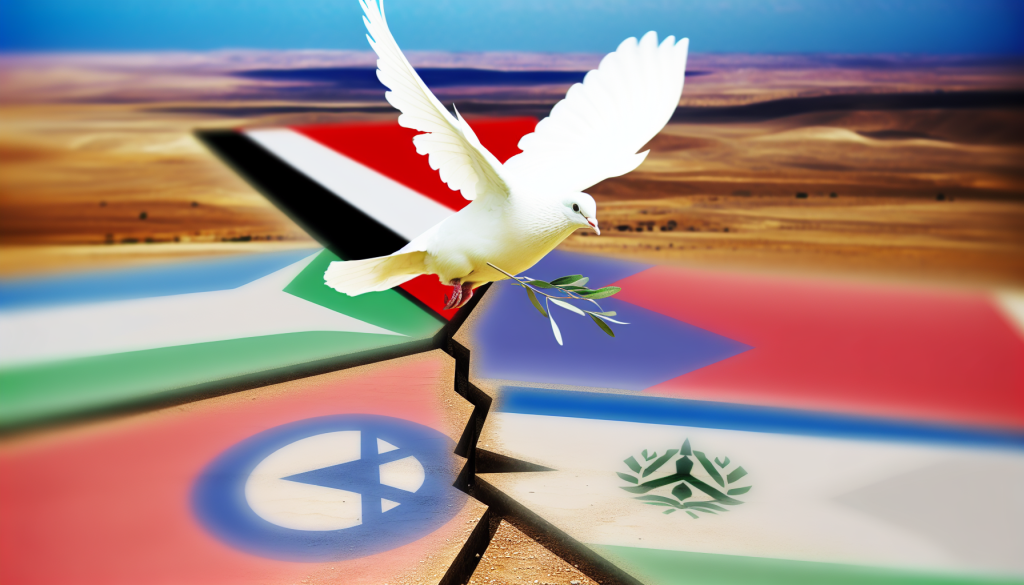Understanding the Israel-Hamas Conflict: Laws of Armed Conflict and Ethical Considerations
Introduction to the Discussion
As military operations resume in Gaza following the intense conflict that erupted after Hamas’s attacks on Israel on October 7, a critical examination of the laws of armed conflict (LOAC) and ethical considerations becomes imperative. A recent discussion featured prominent experts John Bellinger, Lieutenant Colonel Geoffrey Corn, Patrick Hamilton from the International Committee of the Red Cross (ICRC), and Janina Dill, co-director of the Oxford Institute for Ethics, Law, and Armed Conflict.
The Complexity of Armed Conflict Laws
Bellinger opened the session by underscoring the controversy surrounding allegations that both Hamas and Israel have violated international law. Determining compliance with LOAC, especially when symbols of humanity are dramatically represented in the media, is a daunting task—even for legal experts. This establishes the need for informed commentary to dissect the nuances of these allegations.
Framework of International Humanitarian Law
Corn pointed out that the predominant body of law governing Israel’s actions against Hamas falls under international humanitarian law. This set of rules is designed to regulate hostilities and protect war victims, binding all parties engaged in armed conflict, irrespective of their status as state or non-state actors. It emphasizes equality in application; all must adhere to its provisions regardless of the opponent’s conduct.
The Applicability of LOAC to Non-State Actors
Dill emphasized that, despite Hamas’s non-signatory status to various international treaties, LOAC still binds it under customary international law. Key principles—including distinction, proportionality, and precautions—are in effect.
Violations by Hamas
The panelists discussed specific violations committed by Hamas, particularly focusing on the actions taken on October 7. Dill noted the clear war crimes associated with hostage-taking and willful civilian killings. Corn reinforced this, adding that Hamas’s actions don’t cease after the initial strikes; ongoing patterns of behavior reveal ongoing violations.
Israel’s Military Actions and Allegations of War Crimes
Turning the conversation toward Israel, Bellinger posed the complex issue of assessing whether Israeli military actions constitute war crimes. Experts noted that blanket assertions about violations based solely on outcomes inadvertently overlook key aspects of military decision-making.
Corn cautioned against simplistic conclusions drawn from civilian casualties without understanding the military’s objectives, tactics, and procedures aimed at mitigating risks to civilians.
Proportionality and the Difficulty of Interpretation
Dill provided insights into the principle of proportionality, emphasizing that not only actual consequences matter, but also what a reasonable military commander would expect before an attack. The goal is to evaluate potential civilian harm against military gain.
The Role of the ICRC
Hamilton’s perspective as the ICRC’s representative shed light on the organization’s dual role: protecting victims and facilitating dialogue around ensuring compliance with LOAC. Engaging with all parties involved, the ICRC aims to address humanitarian needs and promote adherence to international humanitarian law principles.
Humanitarian Access and Civilian Protection
The question of humanitarian access emerged prominently, with minor but significant roadblocks to delivering aid in Gaza. The expectation is that all combatants must take steps to ensure civilians receive necessary resources like food, water, and medical aid, maintaining obligations under LOAC.
The Accountability Landscape
Bellinger further examined accountability mechanisms in international law. He asked the panelists whether an effective accountability framework exists for investigating possible war crimes. Dill highlighted the critical role of self-investigation by belligerents, suggesting that even if individual accountability may be tricky to enforce, states must still scrutinize their military behavior.
Third-Party Responsibilities and Influence
Dill pointed out that third-party countries, particularly those with strong ties to conflict parties (like the United States with Israel), hold responsibilities for promoting compliance with LOAC. The obligation under Common Article One of the Geneva Conventions becomes critical here, necessitating efforts to ensure adherence to international humanitarian norms.
The Role of Public Perception
The conversation turned to the role of public opinion in influencing military guidelines and practices. Civilians’ experiences in conflict zones often shape perceptions, leading to calls for immediate action or repetitive standards that strictly demand compliance with LOAC.
Final Remarks on Law and Warfare Dynamics
As the discussion unfolded, it became clear that the dynamic between military necessity and humanitarian principles runs deep in conflicts like Israel-Hamas. While the legal frameworks strive to regulate these interactions, ground realities complicate simplistic interpretations of “right” and “wrong.”
As agencies like the ICRC work tirelessly amidst the chaos, the overarching theme emerges: humanitarian values and legal compliance must be as paramount as military objectives in modern warfare.

